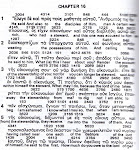From Microbial PathogenesisVolume 40, Issue 1, January 2006, Pages 29-34
Upregulation of PGE2 and MMP-9 and subsequent disease. Look up previous refence to CD44
and "docking" which is also necessary
Here we go
http://tinyurl.com/dxk4p4
Streptococcus suis, an early colonizer of the upper respiratory tract, is a major swine pathogen worldwide that can cause meningitis, arthritis, pneumonia, and septicemia. While numerous studies on potential virulence factors of S. suis have been carried out over the past decade, the exact mechanisms by which this bacterium invades the host and migrates through the blood brain barrier (BBB) remain unclear. In the study presented here, we show that whole cells of S. suis were able to upregulate the production of prostaglandin E2 (PGE2) and matrix metalloproteinase 9 (MMP-9) by U937 human monoblastic cells differentiated into adherent macrophages in a dose- and time-dependent way. Capsular material and cell wall of S. suis were tested to determine which component was responsible for the induction of PGE2 and MMP-9 production by macrophages. The capsular material, even at low concentrations, strongly stimulated the production of PGE2 and MMP-9. While no stimulation was observed with the purified cell wall material, combining it with the capsular material resulted in a significant synergic effect on PGE2 and MMP-9 production. S. suis-mediated MMP-9 and PGE2 production by human macrophages may play a critical role in BBB disruption and tissue destruction.
Saturday, February 28, 2009
Subscribe to:
Post Comments (Atom)






































































No comments:
Post a Comment